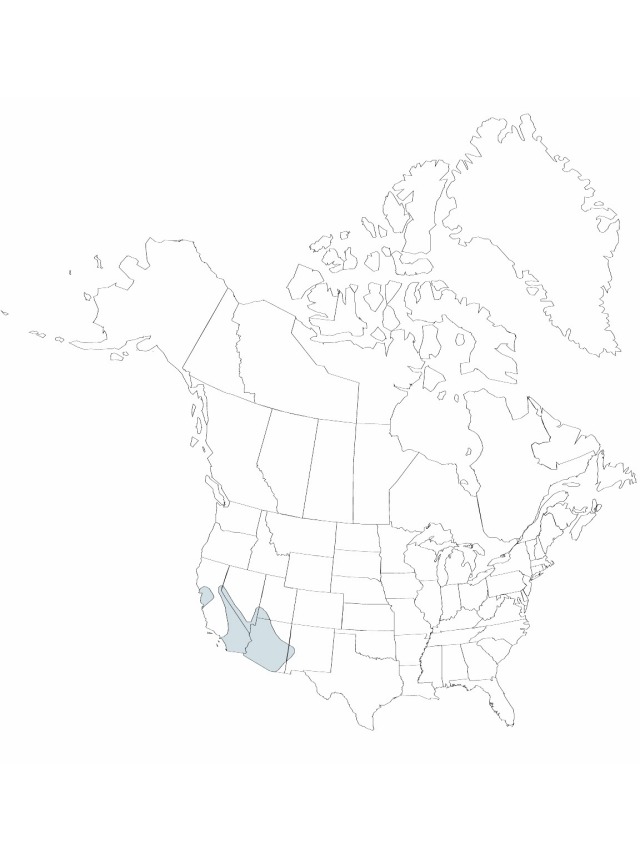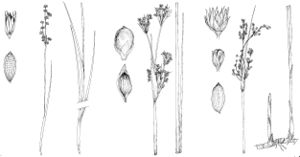Difference between revisions of "Juncus xiphioides"
Synopsis Juncorum 50. 1822.
FNA>Volume Importer |
FNA>Volume Importer |
Revision as of 20:58, 16 December 2019
Herbs, perennial, rhizomatous, 5–9 dm. Rhizomes 2–3 mm diam. Culms erect, 2–6 mm diam. Cataphylls 0 or 1–2, straw-colored, apex narrowly acute. Leaves: basal 1–3, cauline 2–6, straw-colored; auricles absent; blade 10–40 cm x (3–)7–12 mm. Inflorescences panicles or racemes of 20–50 heads, 2–14 cm, erect or ascending branches; primary bract erect; heads 15–70-flowered, obovoid to globose, 7–11 mm diam. Flowers: tepals green to brown or reddish brown, lanceolate, 2.4–3.7 mm, nearly equal, apex acuminate; stamens 6; anthers ½1/2 to equal filament length. Capsules slightly exserted, chestnut to dark brown, 1-locular, ellipsoid, 2.4–3.8 mm, apex acuminate, not beaked. Seeds elliptic to obovate, 0.4–0.6 mm, not tailed. 2n = 40.
Phenology: Fruiting early summer–fall.
Habitat: Salt marshes, moist areas, ditches, springs, lake and stream shores
Elevation: 500–1600 m
Distribution

Ariz., Calif., Nev., N.Mex., Utah, Mexico (Baja California).
Discussion
This species and the next (Juncus ensifolius) are closely related and have been treated as members of a single species (J. xiphioides) by Engelmann. Until a study of the complete subgenus is done, I amwe are hesitant to use a varietal name (J. xiphioides var. triandrus) for the widespread western taxon J. ensifolius.
Selected References
None.
